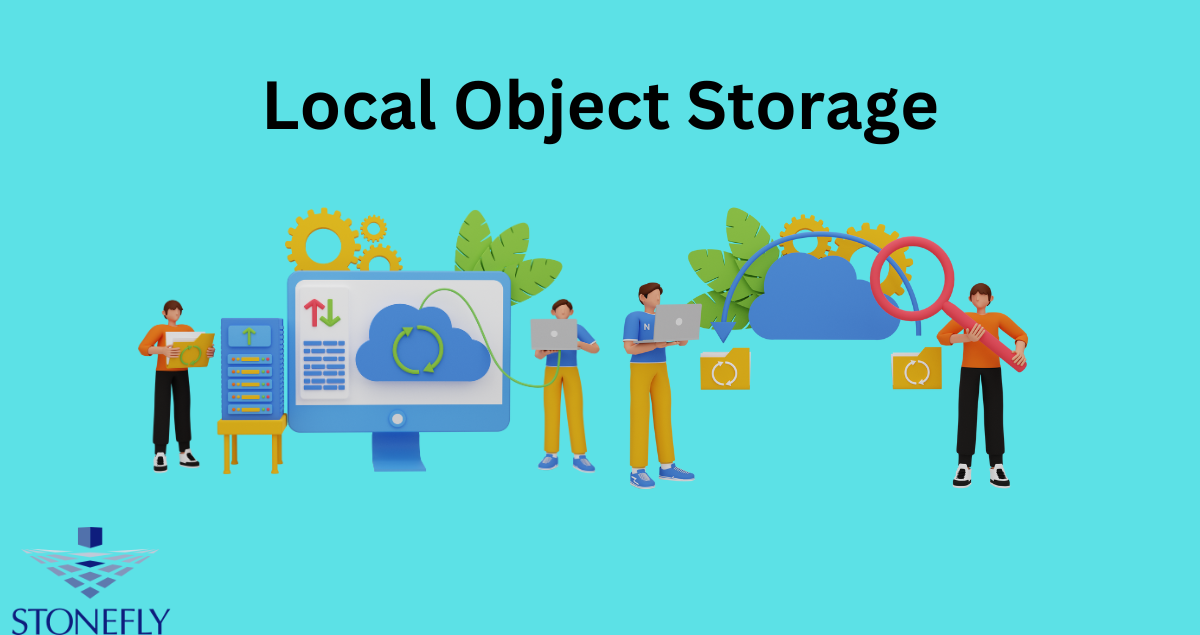Ransomware Attacks: When Backups Fail, What’s Left?

Ransomware Attacks: When Backups Fail, What’s Left?
Ransomware has become a major threat to businesses of every size. These attacks encrypt entire systems—files, servers, and backups included—leaving victims with one brutal decision: pay the ransom or lose everything. Traditional defenses like antivirus tools and firewall rules aren’t enough anymore. Ransomware spreads fast, hides well, and destroys recovery paths by targeting every corner of your infrastructure.
Once it’s in, it’s game over for most backup strategies. Cloud backups? Compromised. Network-attached storage? Encrypted. Backup servers? Locked down too. Everything you thought was safe becomes part of the problem.
The Hidden Strength of Local Object Storage
The key to surviving ransomware isn’t just about detection or prevention—it’s about isolation. That’s where Local Object Storage steps in.
This storage type operates outside the typical Windows or Linux file system environments. It doesn’t expose itself through standard network shares or SMB mounts that ransomware loves to exploit. Instead, it uses APIs or S3-compatible interfaces, which most ransomware strains don’t know how to touch. That means your data, stored here, stays protected—even when everything else is locked behind encryption.
But there’s more: when integrated properly, this storage sits within your local network but remains logically separated. That gap, both in protocol and structure, is what makes the difference between total loss and successful recovery.
How Ransomware Takes Down Traditional Backups
Lateral Movement and Spread
Modern ransomware doesn’t just encrypt files on one system—it moves sideways. Once inside, it looks for network drives, backup servers, cloud sync folders, and anything else it can get its hands on. It encrypts as it moves.
Targeting Backup Software
Backup tools like Veeam, Commvault, or Windows Backup often store credentials for network shares or cloud targets. Ransomware often includes scripts or payloads that shut these services down, delete restore points, or even overwrite backups with junk data. Once these tools are down, you’ve lost your safety net.
Cloud Repositories Are Not Safe Either
It’s tempting to think cloud backup tools like Dropbox, OneDrive, or even S3 buckets are immune. They’re not. If ransomware can access the sync client or the cloud keys, it can reach the backup. And many organizations don’t use object lock or versioning, so once encrypted data is uploaded, recovery becomes nearly impossible.
The Technology Advantage: Isolated Storage Protocols
What makes Local Object Storage so resilient isn’t just its physical location—it’s the protocol. Instead of using SMB, NFS, or CIFS (which ransomware frequently attacks), object storage speaks a different language: HTTP-based S3 APIs.
Here’s what that gets you:
- Access Control: Object storage uses strict authentication mechanisms. No anonymous access.
- No Drive Letters: Most ransomware searches mapped drives or mounted volumes. Object storage doesn’t appear that way.
- Air Gap Effect: While not physically air-gapped, object storage can be logically isolated from production systems, giving you the same benefit.
Add features like object versioning, WORM (Write Once Read Many), and immutability policies, and you’ve got a storage layer that ransomware can’t rewrite or erase.
Use Cases That Prove the Value
Backup and Disaster Recovery
Storing your critical backups on object storage ensures you always have a recovery point that hasn’t been touched by malware. Even better, if the storage includes support for WORM or immutability, backups can’t be modified after they’re written.
Data Archiving
For sensitive compliance data, storing archived files on immutable object storage gives you assurance that even a breach won’t corrupt your records.
Application Data Isolation
You can use this type of storage for logs, media, or structured files that applications write to directly. Keeping them in object storage shields that data from encryption attacks targeting the filesystem level.
Setting It Up Right: Best Practices
Here’s how to make sure your setup works when it matters most:
1. Segment Your Network
Don’t let your storage share the same VLAN or IP range with end-user machines. Isolate it using firewalls or VLANs. The more steps malware has to take to reach the storage, the less likely it is to succeed.
2. Use Strong Access Credentials
Rely on API access with keys, not file shares. Rotate keys regularly and limit their scope.
3. Enable Object Lock or Immutability
This prevents ransomware—or a rogue admin—from deleting or modifying stored data for a set period.
4. Regular Testing
Backup jobs that look good on paper often fail in practice. Test restoration regularly. Confirm that you can recover from the object storage and that the files remain unmodified.
5. Monitor and Alert
Use tools that alert you when there’s unusual access behavior. Sudden deletions or API calls from unexpected locations should trigger an alarm.
Don’t Pay the Ransom: Recover Instead
When ransomware hits, you’ll hear from your IT team that the servers are encrypted. The Cloud Sync is corrupted. The backup server won’t boot. If all you’ve got are networked backups, you’re stuck.
But if you’ve used Local Object Storage properly—isolated, secured, and untouched—it becomes your emergency parachute. You can pull clean data back into the network and start restoring systems without negotiating with criminals.
No downtime, no ransom payments, no legal headaches.
Conclusion
Ransomware will keep getting smarter. Attackers are no longer just encrypting systems—they’re finding ways to destroy the lifelines companies rely on to recover. That’s why having storage that speaks a different language, avoids exposure, and remains untouched by ransomware matters so much.
Local Object Storage isn’t a magic bullet, but it gives you a fighting chance. When the dust settles and everything else is locked up, this may be the only place where your data still lives.
FAQs
1. Why doesn’t ransomware affect object storage?
Most ransomware attacks traditional file systems (like SMB or NFS). Object storage uses different access protocols (S3 APIs), which ransomware isn’t built to interact with.
2. Can object storage be hacked or encrypted too?
It’s possible, but difficult—especially if the storage is isolated, uses access keys, and applies object immutability policies. Most ransomware doesn’t support these methods.
3. What’s the difference between object storage and traditional backups?
Traditional backups use file or block-level protocols. Object storage stores data as objects and uses APIs for access, which adds a layer of protection.
4. Is cloud object storage just as safe?
Cloud object storage is only as safe as your access control. If the ransomware has your cloud keys, it can do damage. Local setups give you more control and isolation.
5. Can I replace all my backups with object storage?
You can use it as a central backup repository, but it should complement—not replace—all forms of backup, including offline or air-gapped solutions for added safety.






Leave a Comment